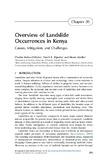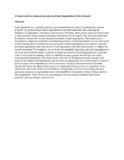Land Library
Bienvenue dans la bibliothèque du Land Portal. Explorez notre vaste collection de ressources en libre accès (plus de 74 000), comprenant des rapports, des articles scientifiques, des articles de recherche, des publications évaluées par des pairs, des documents juridiques, des vidéos et bien plus encore.
/ library resources
Showing items 1 through 9 of 29.Land Use and Land Cover Change (LULCC) is the most prominent cause of Soil Organic Carbon (SOC) variability in any landscape.
The objective of the study was to detect and identify land cover changes in Laikipia County of Kenya that have occurred during the last three decades. The land use types of study area are six, of which three are the main and the other three are the minor.
There is correlation on land degradation in reference to environment conflict against natural
resources undocumented. Environmental conflicts mostly depend over human needs and issues
such as distribution, allocation and natural resources management. History documents show how
Rehabilitating degraded rangelands using enclosures offers various benefits to agro-pastoral households. However, enclosure benefits cannot be generalized as there are variations across dryland ecosystems and societies.
Makueni District has experienced low crop production per unit area despite increased hectarage under crop
production. The district relies heavily on farming for food and income generating activities for the households.
Livestock production is the main source of livelihood in the arid and semi-arid lands in Africa. However, desertification characterized by vegetation degradation and soil erosion is a major threat to the sustainability of land-based production systems.
Natural disasters disrupt people's lives through displacements, destruction of livelihoods and property, deaths, and injuries.
Land degradation is a gradual, negative environmental process that is accelerated by human activities. Its gradual nature allows degradation to
proceed unnoticed, thus reducing the likelihood of appropriate and timely control action. Presently, there are few practical frameworks to help
Kenya’s land surface is primarily arid and semi-arid lands (ASALs) which account for 84% of the total land area.








